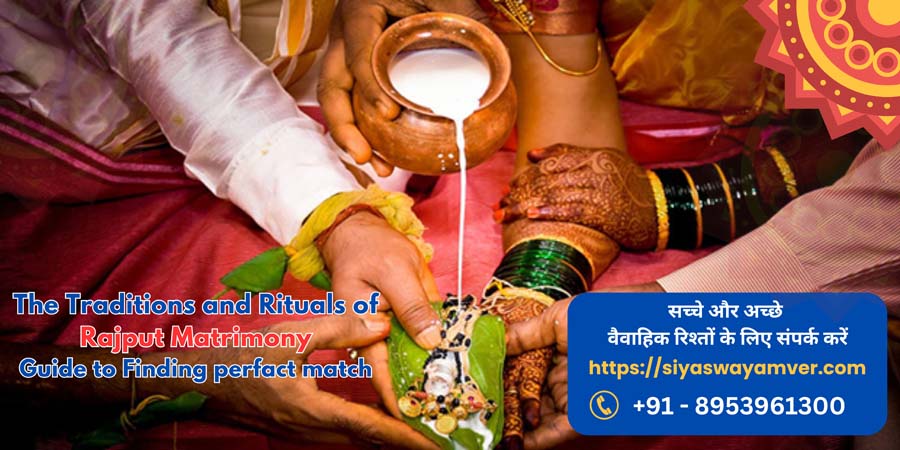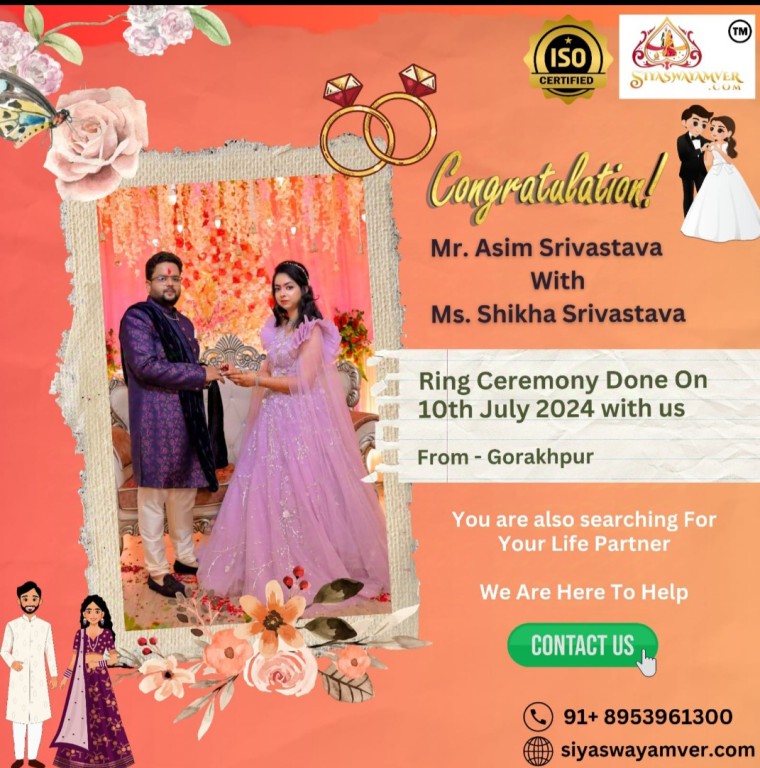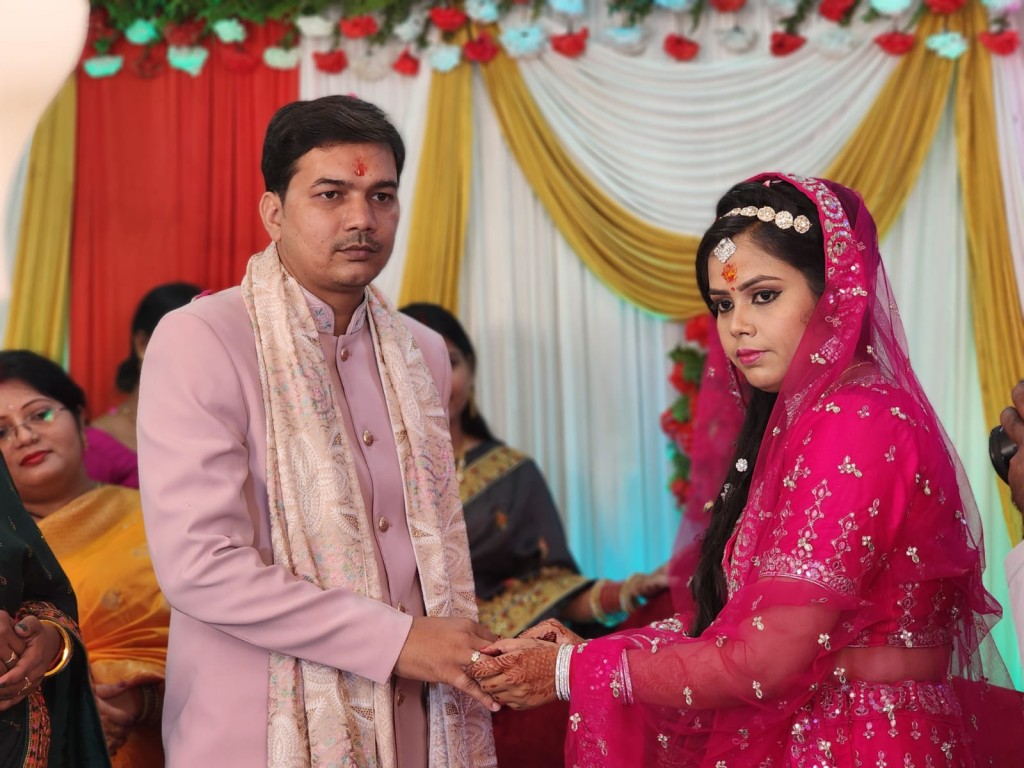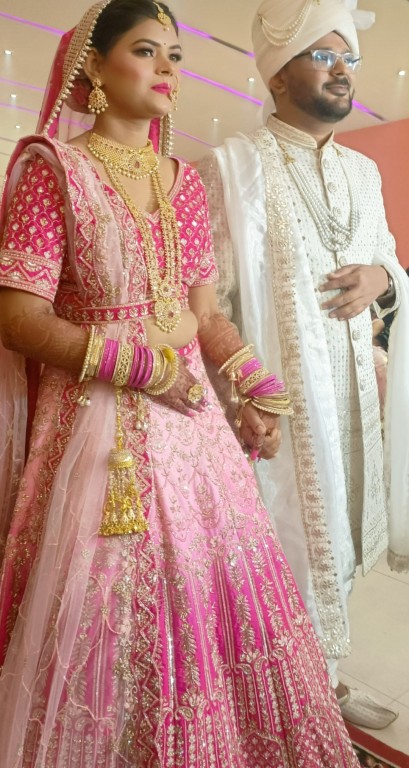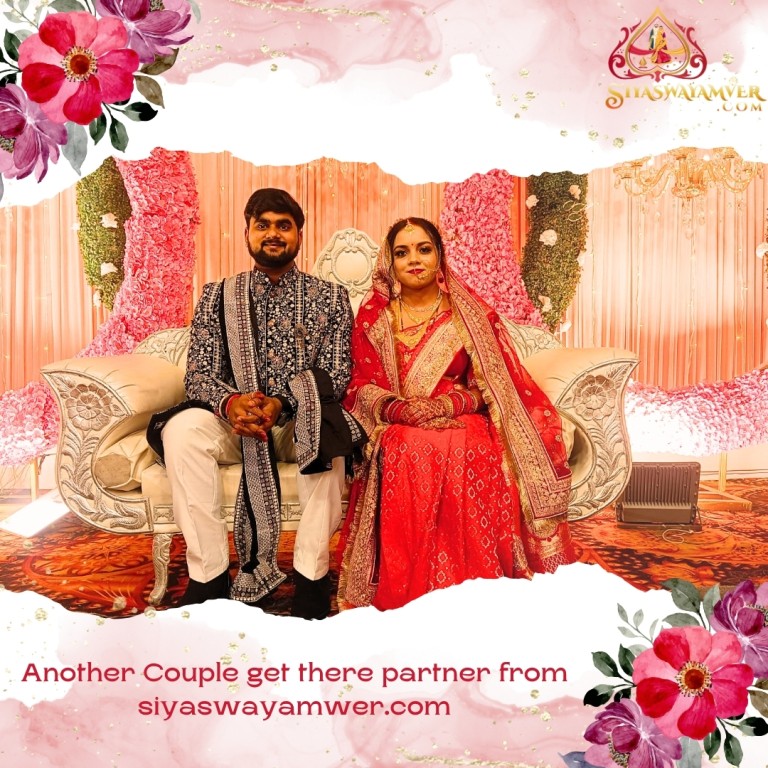Blog Details
The Traditions and Rituals of Rajput Matrimony Guide to Finding perfect match
Friday 19th July, 2024
Welcome to the enchanting world of Rajput matrimony, where the grandeur of royal traditions and age-old customs paints a vivid picture of cultural heritage. Rajput weddings are more than just a union of two individuals; they are a festive amalgamation of elaborate rituals, vibrant celebrations, and deep-seated values passed down through generations. In this guide, we'll take you through the mesmerizing journey of Rajput marriage rituals, helping you understand the significance behind each practice and perhaps, guiding you in finding the perfect match within this illustrious community. Get ready to be immersed in the regalia and romance of Rajput weddings, a truly majestic affair!
The History of Rajput Matrimony
सच्चे और अच्छे वैवाहिक रिश्तों के लिए हमसे जुड़ें।
हम सिर्फ रिश्ते ही नहीं बताते, निभाते भी हैं।
हमारी विशेषताएं: व्यक्तिगत और गोपनीय सेवाएं, व्यापक डेटाबेस, विशेषज्ञ परामर्श, अधिक जानकारी के लिए www.siyaswayamver.com पर जाएं या +91 - 8953961300 पर संपर्क करें।
Rajput matrimony is steeped in traditions and practices passed down through generations. The Rajput community, primarily found in the Indian subcontinent, has a profound history that reflects valor, honor, and a steadfast adherence to rituals. Historically, Rajput marriages were alliances that extended beyond the social, helping in fortifying family ties and establishing strong political connections. Generally, these marriages were arranged by family members where the reputation and valor of the family played a crucial role. Rajput weddings are elaborate affairs immersed in rituals that honour their rich cultural heritage.
Pre-Wedding Rituals in Rajput Matrimony
The journey to a Rajput wedding begins with several colorful and traditional pre-wedding rituals. These rituals not only provide moments of joy and celebration but also signify the unity between the two families.
Tilak Ceremony
The Tilak ceremony marks the formal confirmation of the engagement between the two families. It is usually conducted at the groom’s residence, where male members of the bride’s family visit to apply Tilak on the groom's forehead. This auspicious occasion is attended by close relatives, who bring along gifts such as clothes, sweets, fruits, and jewelry for the groom and his family. During this ceremony, the date of the wedding is often finalized, and it serves as an official seal of approval from the bride's family to the groom, acknowledging him as an integral part of their family soon.
Sagai Ceremony
Following the Tilak, the Sagai ceremony, or the engagement ceremony, involves an exchange of rings between the bride and groom. It is typically a grand affair and marks the beginning of the formal relationship between the couple. The Sagai is significant as it reflects the commitment before the actual wedding. During this ceremony, the groom’s family visits the bride's home with gifts similar to those presented during the Tilak. Both families share a festive meal and blessings are offered to the couple. This ceremony solidifies the bond between the families, setting a joyful tone for the upcoming wedding festivities. The Sagai is pivotal, not just for the bride and groom, but for both families as they merge their heritage and traditions through the union of their children.
Through these pre-wedding rituals, Rajputs celebrate not just the upcoming union of a couple but also the coming together of entire communities, each with rich histories and deep-rooted traditions. It's a beautiful prelude to the grandeur that follows in a typical Rajput wedding ceremony, each element and ritual meticulously planned to honor the ancestors and invoke blessings for the newlyweds' future.
The Wedding Ceremony
The Rajput wedding ceremony is a grand, colorful event filled with age-old traditions and vibrant rituals that reflect the majestic heritage of the Rajput community. Every ceremony is performed with utmost sincerity and reverence, celebrating not only the union of the bride and groom but also their families.
Baraat Procession
The Baraat procession is one of the most lively aspects of Rajput weddings. It marks the arrival of the groom at the wedding venue. The groom, dressed in traditional attire, typically rides a decorated horse or an elephant, accompanied by his family and friends. The procession is a festive affair with music, dancing, and sometimes even a band. The groom's family is greeted with aarti and garlands by the bride's family, signifying the acceptance and welcoming of the groom into their family.
Phere Ceremony
The Phere ceremony is the core of the Rajput wedding, where the bride and groom make seven circles (or pheres) around a sacred fire, each circle signifying a specific vow or aspect of their marriage. This ritual is conducted under the auspices of a priest who chants mantras from the Vedas. It is believed that the fire witness the vows they make to each other. The pheres cement the couple's commitment to each other and their families, making it a deeply emotional experience.
Kanyadaan
Kanyadaan is another pivotal ceremony in Rajput weddings, symbolizing the "giving away" of the daughter by her parents. This poignant ritual is often an emotional moment, highlighting the parents' acceptance of the marriage and their blessing for the couple’s future happiness. During Kanyadaan, the bride’s father places her hand in the groom’s hand, entrusting his daughter's life and wellbeing to the groom.
Post-Wedding Traditions
Rajput weddings extend their celebrations to several post-wedding traditions that are just as significant as the ceremonies of the wedding day.
Bidai Ceremony
The Bidai ceremony marks the departure of the bride from her parental home to her new home with the groom. It is a bittersweet moment filled with tears and joy as the bride says goodbye to her family and childhood home. The bride throws back handfuls of rice over her head into her mother’s hands, symbolizing that she repays her parents for all they have given her and wishing prosperity upon the home she is leaving.
Griha Pravesh
Upon arriving at the groom’s home, the bride is welcomed with the Griha Pravesh ceremony. This ritual signifies the bride's integration into her new family. She usually knocks over a pot filled with rice, symbolizing the abundance that she brings to her new home. Family members bless the couple, and the bride crosses the threshold with her right foot first, considered auspicious and a harbinger of good fortune for the household.
Each of these traditions and ceremonies in Rajput matrimony not only celebrate the start of a marital journey but also firmly root the couple in the cultural ethos and values of the Rajput community, making their union a continuation of cultural legacy.
Symbolism and Significance of Rajput Matrimony Rituals
Rajput matrimony is rich with rituals and ceremonies that are steeped in tradition and symbolism, reflecting the values of bravery, honor, and loyalty that are central to Rajput culture. Each ritual has its significance, playing a crucial role in not only uniting the couple but also their families. For instance, the 'Tilak Ceremony' marks the formal acceptance of the groom by the bride's family, symbolizing their acknowledgment of the groom's qualities and capabilities. Similarly, the 'Pithi Dastoor' involves the application of a turmeric paste on the bride and the groom at their respective homes, signifying purification and beautification before the wedding.
The 'Baraat,' the grand procession of the groom and his relatives on horses, accompanied by music and dance, showcases the Rajput pomp and splendor. This is followed by the 'Jaimala' where the bride and groom exchange garlands, symbolizing their acceptance of each other. The most sacred of these rituals is the 'Phere,' where the couple takes seven rounds around the ceremonial fire, each round making vows of loyalty, love, and respect towards each other, which cements their bond for a lifetime.
Finding the Perfect Match in Rajput Matrimony
The process of finding the perfect match in Rajput matrimony, while adhering to traditions, has seen a blend of conventional and modern approaches. The matchmaking in Rajput communities is not merely about finding a spouse but about connecting two families that share similar values and status.
Traditional Matchmaking Practices
Traditionally, Rajput marriages were arranged by the families, with the elders taking the initiative in finding suitable matches. The families would consider various factors such as the lineage, reputation, valor, and the compatibility of the horoscopes. The 'Gotra' system was strictly followed to ensure that marriages occurred between different clans. Matchmakers or 'Nayaks' played a crucial role in these arrangements, traveling far and wide to gather information about prospective matches. This system, deeply rooted in community and family networks, ensures alliances that are not only emotionally fulfilling but also socially advantageous.
Modern Approaches to Partner to Search
In contemporary times, while traditional factors like family background and horoscopes still play a role, there's a shift towards more practical considerations in the partner search process. The advent of technology has brought Rajput matrimony to digital platforms, such as matrimonial websites and mobile apps, dedicated specifically to the Rajput community. These platforms provide a broad spectrum of choices and detailed information, allowing individuals to find matches that meet their personal preferences and criteria.
Furthermore, modern education and increased socio-economic awareness have empowered the younger generations to have a say in their matrimonial decisions. They look for partners who are not just from a similar cultural background but also have compatible educational qualifications and career goals. The criteria for choosing a partner have progressively expanded to include personal attributes, life aspirations, and mutual respect, reflecting a blend of traditional values and contemporary expectations. Such platforms and changing attitudes make the journey of finding the perfect Rajput match both fascinating and complex, offering the best of tradition and modernity.
Conclusion: Embracing the Beauty of Rajput Matrimony
The journey through Rajput matrimony is a profound exploration of tradition, honor, and commitment, adorned with rich rituals and vibrant celebrations. Understanding the deep-rooted customs helps appreciate the cultural significance of each ceremony and encounter the essence of Rajput heritage. Whether you are a part of the Rajput community or simply a spectator, the experience is unforgettable, illustrating the elaborate preparations and the strong community bonds nurtured through these age-old practices.
For those looking to find the perfect match within the Rajput community, embracing these traditions can forge stronger connections and shared values right from the start. By celebrating Rajput matrimony, families, and individuals not only honor their past but also pave the way for a future filled with respect, unity, and cultural pride.


